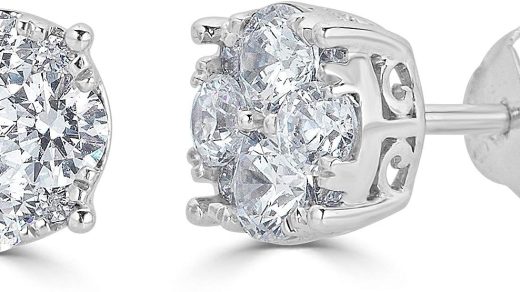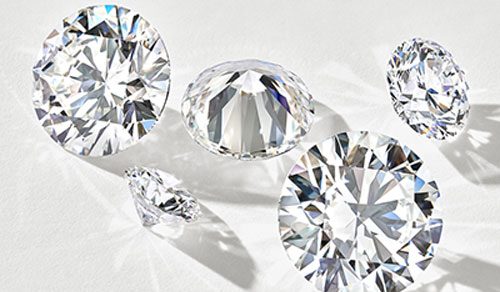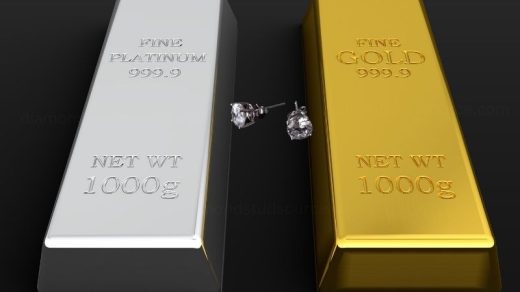So you’ve always been curious about the world of diamonds, huh? Well, buckle up because you’re about to embark on a truly fascinating journey. In this article, we’re going to explore the intricate process of diamond cutting, from its rough and unpolished state to its breathtaking sparkle on the finger of a lucky wearer. Prepare to be amazed as we demystify the secrets behind transforming a dull rock into a radiant gem that captivates the eyes and hearts of many. Let’s dive into the captivating world of diamond cutting, where science meets artistry and nature’s wonders are brought to life.

Formation of Diamonds
Natural Diamond Formation
Diamonds are formed deep within the Earth’s mantle, approximately 90 to 120 miles below the surface. The formation process begins when carbon in the form of ancient organic matter is subjected to intense heat and pressure over millions of years. This process occurs in areas of the mantle where temperatures exceed 2,200 degrees Fahrenheit and pressures reach over 725,000 pounds per square inch.
During volcanic eruptions, diamonds are transported to the Earth’s surface through volcanic pipes, known as kimberlite pipes. These pipes act as conduits, carrying diamond-bearing rocks called kimberlite and lamproite to the surface. The sudden drop in pressure during the eruption causes the diamonds to solidify and form into their characteristic crystal structure.
Diamond Mining Process
Diamond mining is a complex and labor-intensive process that involves several stages. The primary methods of diamond extraction include alluvial mining and underground mining.
Alluvial mining involves the extraction of diamonds from riverbeds, beaches, and other sedimentary deposits. Miners use sieves, pans, and other equipment to separate the diamond-rich gravel from the surrounding materials. This method is commonly used in South Africa and other diamond-rich regions.
Underground mining, on the other hand, involves the excavation of diamond-bearing kimberlite pipes. Miners use explosives and heavy machinery to access these deep deposits. Once the kimberlite rock is extracted, it is then transported to a processing plant where the diamonds are separated from the ore through crushing, screening, and dense media separation.
Understanding Diamond Cutting
Definition of Diamond Cutting
Diamond cutting refers to the process of transforming a rough diamond into a polished gemstone with precise facets and angles. The goal of diamond cutting is to enhance the stone’s beauty and maximize its brilliance, fire, and sparkle.
Purpose of Diamond Cutting
The primary purpose of diamond cutting is to unleash the inherent beauty and potential of a rough diamond. By carefully shaping and faceting the stone, diamond cutters can optimize its optical properties and create a breathtaking gem that reflects light in the most captivating way. Additionally, diamond cutting aims to maximize weight retention and minimize any potential flaws or inclusions in the stone.
Different Cutting Styles
Diamond cutting encompasses various cutting styles, each with its unique characteristics. Some popular diamond cuts include the round brilliant cut, princess cut, emerald cut, oval cut, cushion cut, marquise cut, Asscher cut, radiant cut, pear cut, and heart cut. Each cut possesses distinct facets and proportions, resulting in different appearances and optical effects.
Evolution of Diamond Cutting Techniques
Early Diamond Cutting
Diamond cutting has a rich history that dates back thousands of years. In ancient times, diamond cutting techniques were rudimentary, and the emphasis was primarily on grinding and polishing the stones to enhance their natural beauty. The earliest known diamond cuts were simple and symmetrical, featuring a flat table and a crude arrangement of facets.
Rose Cut
The rose cut, popular during the 16th and 17th centuries, was one of the earliest faceting styles. This cut resembled the shape of an opening rosebud, with a flat base and triangular facets arranged in a symmetrical pattern. The rose cut was characterized by a large, flat top and a dome-shaped profile, which allowed for maximum light reflection.
Old Mine Cut
The old mine cut, prevalent from the 18th to the early 20th centuries, featured a square or rectangular shape with rounded corners. This cut had a high crown, a small table, and a large culet, creating a distinctively romantic and antique look. The old mine cut diamonds often exhibit a “chunky” appearance, with broad facets and soft edges.
European Cut
The European cut emerged in the mid-19th century and was the precursor to the modern round brilliant cut. This cut featured a larger table, smaller culet, and increased crown and pavilion angles. These modifications enhanced the diamond’s brilliance and fire, making it more scintillating compared to previous cuts.
Modern Cutting Techniques
With advancements in technology and the understanding of light behavior, modern diamond cutting techniques have become more precise and scientific. Through the use of computer-aided design (CAD) software, diamond cutters can create intricate faceting patterns that optimize light performance. Modern cutting techniques focus on achieving ideal proportions, symmetry, and polish to maximize a diamond’s beauty and value.
Tools and Equipment Used in Diamond Cutting
Basic Tools
Diamond cutters require a range of basic tools to shape and polish diamonds. These tools include diamond cutting blades, tweezers, lens loupes, gauges, calipers, dop sticks, and polishing laps. Some of these tools are hand-held, while others are mounted on machinery for more precise and efficient cutting.
Diamond Sawing Machines
Diamond sawing machines are utilized to cut diamonds into multiple pieces, known as diamond slices or rough pieces. These machines feature a thin, diamond-embedded blade that can slice through even the hardest diamonds with precision and minimal loss. Diamond sawing helps optimize the utilization of rough diamonds and ensures maximum yield.
Diamond Cutting Wheel
A diamond cutting wheel, also known as a scaife or a lap, is a rotating disc used for shaping and polishing diamonds. The cutting wheel features a metallic or ceramic substrate coated with diamond grit or powder. Diamond cutters use the cutting wheel in combination with diamond paste or polishing compound to refine the facets and achieve a polished finish on the diamond.
Laser Cutting Technology
Laser cutting technology has revolutionized the diamond cutting industry. High-powered lasers are used to make precise incisions in diamonds, enabling the cutter to separate the stone into smaller pieces or to create intricate patterns and designs. Laser cutting is especially useful for cutting diamonds with unusual shapes or for adding personalized engravings to the stone.

The Art and Science of Diamond Faceting
Role of a Diamond Cutter
The role of a diamond cutter is both an art and a science. Diamond cutters must have a deep understanding of diamond anatomy, light behavior, and optical physics. They combine this knowledge with their artistic skill to determine the ideal shape, proportion, and symmetry for each diamond. Diamond cutters carefully analyze the rough diamond’s characteristics and plan the faceting process to maximize its brilliance and overall aesthetic appeal.
The Faceting Process
The faceting process begins with the careful analysis and marking of the rough diamond to determine the optimal cutting plan. Diamond cutters use specialized machinery and tools to shape the diamond, cutting and polishing each facet to precise angles and dimensions. This process involves iterative steps of grinding, polishing, and checking the diamond under various lighting conditions to ensure optimal light performance.
Factors Affecting Faceting
Several factors influence the faceting process and the final appearance of a diamond. The shape and size of the rough diamond, the desired diamond cut, and the presence of any inclusions or flaws all play a role in determining the faceting approach. Additionally, the cutter must consider the diamond’s natural color, clarity, and fluorescence, as these characteristics can affect its overall beauty and value.
Angle and Positioning of Facets
The angles and positioning of each facet are critical in determining a diamond’s brilliance, fire, and scintillation. Diamond cutters carefully calculate and control the angles to ensure maximum light reflection and refraction within the stone. The precise alignment and positioning of the facets impact how light enters and exits the diamond, creating the spectacular play of light that diamonds are renowned for.
Popular Diamond Cuts in the Market
Round Brilliant Cut
The round brilliant cut is the most popular and widely recognized diamond shape. It features 58 facets, including a large table, a culet, and a cone-shaped pavilion. The round brilliant cut is renowned for its exceptional brilliance and fire, as its facets are strategically positioned to maximize light reflection and refraction.
Princess Cut
The princess cut is a square or rectangular shape with clean, sharp corners. It is characterized by inverted pyramid-shaped facets on the pavilion and a brilliant-cut crown. The princess cut offers a modern and elegant look, with ample brilliance and scintillation.
Emerald Cut
The emerald cut is a rectangular shape with elegant step-cut facets across the pavilion and a large, open table. This cut emphasizes the diamond’s clarity and luster, rather than its fire and brilliance. The emerald cut is popular for its classic and sophisticated appeal.
Oval Cut
The oval cut is an elongated shape that features brilliant-cut facets similar to the round brilliant cut. It offers a unique combination of brilliance and length, creating an elongating effect on the finger. The oval cut is known for its versatility and flattering appearance.
Cushion Cut
The cushion cut, also referred to as the pillow cut, is a square or rectangular shape with rounded corners. It showcases a blend of brilliant-cut and step-cut facets, producing a distinctive pattern and a romantic, vintage-inspired appearance. The cushion cut offers a balance between brilliance and a soft, romantic demeanor.
Marquise Cut
The marquise cut is an elongated shape with pointed ends and a boat-shaped profile. Its elongated silhouette creates an illusion of greater size, making it a popular choice among those seeking a diamond with a larger appearance. The marquise cut exhibits a beautiful blend of brilliance and elegant symmetry.
Asscher Cut
The asscher cut is a square-shaped cut with step-cut facets and a high crown. This cut resembles an octagonal emerald cut, but with a smaller table and larger facets. The Asscher cut has a distinctive Art Deco appeal, characterized by its geometric lines and unique faceting pattern.
Radiant Cut
The radiant cut is a square or rectangular shape with brilliant-cut facets on both the crown and pavilion. It combines the elegance of the emerald cut with the brilliance of the round brilliant cut. The radiant cut offers a dazzling display of fire and scintillation.
Pear Cut
The pear cut, also known as a teardrop shape, combines the features of a round brilliant and a marquise cut. It features a rounded end and a tapering point, creating a unique and elegant silhouette. The pear cut offers a graceful and sophisticated look.
Heart Cut
The heart cut is a romantic and symbolic shape resembling a stylized heart. It requires exceptional precision and craftsmanship to ensure balanced proportions and symmetrical lobes. The heart cut is associated with love and is a popular choice for romantic occasions and jewelry.
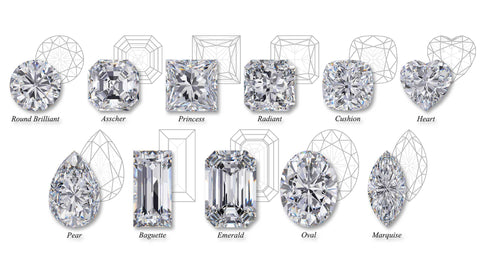
The Impact of Cutting on Diamond Value
Cut Grade Evaluation
The quality of a diamond’s cut is evaluated based on various criteria, which are combined to assign a cut grade. The Gemological Institute of America (GIA) developed the industry-standard cut grading system, which assesses a diamond’s brightness, fire, scintillation, and overall visual appeal. Cut grades range from excellent to poor, with excellent and very good grades indicating superior light performance.
Importance of Cut in Diamond Pricing
The cut of a diamond has a significant influence on its pricing. Well-cut diamonds with excellent light performance and high brilliance command higher prices than poorly cut diamonds. A well-cut diamond not only maximizes its beauty but also ensures optimal light reflection and refraction, enhancing its overall value and desirability.
Ideal Cut Proportions
Diamonds with proportions that fall within specific range criteria are considered to have ideal cut proportions. These proportions are carefully calculated to optimize light return and deliver maximum brilliance, fire, and scintillation. An ideal cut diamond reflects light internally and externally, creating an exceptional display of sparkle and life.
The depth and Table Percentage
Depth and table percentage are critical measurements used to evaluate a diamond’s proportions. Depth refers to the distance between the diamond’s table and culet, while table percentage measures the width of the table facet relative to the diameter of the diamond. Well-proportioned diamonds have an optimal blend of depth and table percentage, ensuring balanced light performance.
Sparkle and Brilliance
The quality of a diamond’s cut directly impacts its sparkle and brilliance. Well-cut diamonds interact with light in a way that maximizes the amount of light reflected back to the viewer’s eye. The precise angles and positioning of the facets enable the diamond to capture and reflect light, creating an array of vibrant colors and scintillation.
The Role of Technology in Diamond Cutting
Advancements in Diamond Cutting Technology
Advancements in technology have greatly revolutionized the diamond cutting industry. Computer-aided design (CAD) software allows diamond cutters to precisely map and visualize the facets before cutting. This technology has significantly improved the accuracy and efficiency of the cutting process, resulting in finer craftsmanship and more consistent results.
Computer-Aided Design (CAD) Software
CAD software provides diamond cutters with advanced modeling tools to design and simulate the cutting process. They can analyze the impact of different facet arrangements and proportions on a diamond’s light performance without physically cutting the stone. This technology enables cutters to experiment with various designs and optimize the final cut for maximum beauty.
3D Printing in Diamond Cutting
The incorporation of 3D printing technology in diamond cutting has opened up new possibilities for creating intricate and unique designs. Diamond cutters can now utilize 3D printers to create precise wax or resin models of a diamond’s desired shape and facet arrangement. These models serve as guides for the cutting process, ensuring accuracy and minimizing errors.
Automated Cutting and Polishing Machines
Automated cutting and polishing machines, equipped with advanced robotics and imaging systems, have streamlined the diamond cutting process. These machines can analyze a diamond’s characteristics and create a digital 3D model, allowing for more precise cutting. Automated machines enable manufacturers to achieve consistency in cut quality and reduce production time.
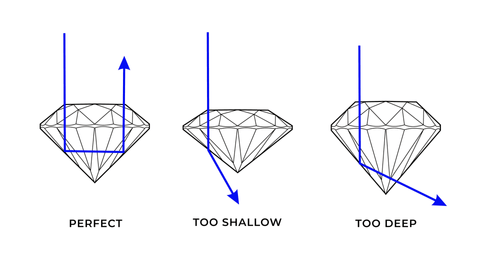
Famous Diamond Cutting Centers
Antwerp, Belgium
Antwerp is renowned as the world’s diamond capital, with a history of diamond cutting that dates back centuries. The city is home to a thriving diamond district, where thousands of diamond cutters and polishers work their craft. Antwerp’s diamond cutting industry has built a reputation for its high-quality craftsmanship and innovative cutting techniques.
New York City, USA
New York City has long been a significant player in the global diamond industry. The city is home to numerous high-end jewelry manufacturers and diamond cutting facilities. With a diverse and skilled workforce, New York City is known for producing exquisite diamonds and pioneering cutting and polishing techniques.
Mumbai, India
Mumbai, formerly known as Bombay, has emerged as one of the leading centers for diamond cutting and polishing. The city boasts a large number of skilled artisans who excel in precision cutting and flawless polishing. Mumbai’s diamond cutting industry is renowned for its exceptional craftsmanship, competitive pricing, and adherence to international quality standards.
Tel Aviv, Israel
Tel Aviv has established itself as a prominent diamond trade hub and a center for diamond cutting and manufacturing. The city’s diamond district houses a vast number of diamond companies and cutters, specializing in various types of cuts and styles. Tel Aviv’s diamond cutting industry is known for its focus on quality, innovation, and delivering exceptional craftsmanship.
Bangkok, Thailand
Bangkok has emerged as a major player in the global diamond industry, particularly in the field of diamond cutting and trading. The city houses a significant number of diamond cutting factories, employing skilled artisans who specialize in custom cutting and precision work. Bangkok’s diamond cutting industry offers a wide range of cuts and designs, catering to both domestic and international markets.
The Future of Diamond Cutting
Innovations in Diamond Cutting Techniques
The future of diamond cutting holds exciting possibilities with the development of new technologies and techniques. Innovations such as advanced laser cutting, the use of nanotechnology for surface enhancement, and the application of spectroscopy for precision gemstone analysis are already shaping the future of the industry. These advancements will lead to even more precise and efficient cutting processes, resulting in diamonds of unparalleled beauty.
Sustainable and Ethical Diamond Cutting
As the demand for ethical and sustainable practices increases, the diamond industry is embracing responsible sourcing and manufacturing. Ethical diamond cutting involves ensuring that the diamonds are sourced from conflict-free regions and mined using environmentally friendly methods. Additionally, sustainable manufacturing practices aim to reduce energy consumption, minimize waste, and promote fair labor conditions.
Integration of Artificial Intelligence
The integration of artificial intelligence (AI) in diamond cutting is set to revolutionize the industry. AI algorithms can analyze vast amounts of data to enhance the precision and efficiency of the cutting process. AI-powered systems can optimize facet placement, improve light performance predictions, and aid in automating certain aspects of the cutting process, resulting in greater accuracy and productivity.
Customization and Personalization Trends
The future of diamond cutting is likely to see an increasing emphasis on customization and personalization. With advancements in technology, diamond cutters will have the ability to create unique and bespoke cuts to cater to individual preferences. From customized facet arrangements to one-of-a-kind designs, personalized diamond cutting will offer consumers the opportunity to own truly unique and meaningful pieces of jewelry.
In conclusion, the journey of diamond cutting is a fascinating blend of artistry, craftsmanship, and technological innovation. From its natural formation deep within the Earth to its transformation into exquisite gemstones, the process of diamond cutting is a testament to human ingenuity and the desire to unlock the utmost beauty and brilliance of these remarkable stones. With the continued advancements in cutting techniques, technology, and the focus on sustainability and personalization, the future of diamond cutting holds even more excitement and limitless possibilities. So, the next time you hold a sparkling diamond, remember the intricate process it went through to become the dazzling masterpiece it is today.

© 2022-2023 by diamondstudsource. All rights reserved. No part of this document may be reproduced or transmitted in any form or by any means, electronic, mechanical, photocopying, recording, or otherwise, without prior written permission of diamondstudsource.com.


